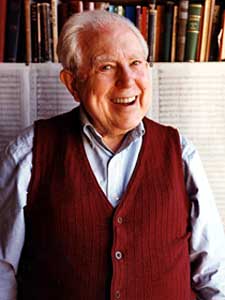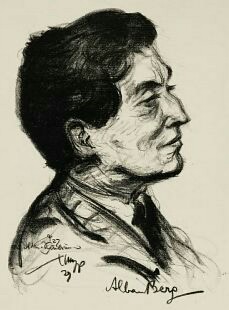Related Research Articles

Pizzicato is a playing technique that involves plucking the strings of a string instrument. The exact technique varies somewhat depending on the type of instrument:

A string quartet is a musical ensemble consisting of four string players – two violin players, a viola player and a cellist. It is also a musical composition written to be performed by such a group. The string quartet is one of the most prominent chamber ensembles in classical music; most major composers from the mid 18th century onwards wrote string quartets.

Chamber music is a form of classical music that is composed for a small group of instruments—traditionally a group that could fit in a palace chamber or a large room. Most broadly, it includes any art music that is performed by a small number of performers, with one performer to a part. However, by convention, it usually does not include solo instrument performances.

The String Quartet No. 4 by Béla Bartók was written from July to September 1928 in Budapest. It is one of six string quartets by Bartok.

Elliott Cook Carter Jr. was an American modernist composer. One of the most respected composers of the second half of the 20th century, he combined elements of European modernism and American "ultra-modernism" into a distinctive style with a personal harmonic and rhythmic language, after an early neoclassical phase. His compositions are performed throughout the world, and include orchestral, chamber music, solo instrumental, and vocal works. The recipient of many awards, Carter was twice awarded the Pulitzer Prize.

The Lyric Suite is a six-movement work for string quartet written by Alban Berg between 1925 and 1926 using methods derived from Arnold Schoenberg's twelve-tone technique. Though publicly dedicated to Alexander von Zemlinsky, the work has been shown to possess a "secret dedication" and to outline a "secret programme".
The String Quartet No. 15 in G major, D. 887, was the last quartet written by Franz Schubert in June 1826. It was posthumously published in 1851, as Op. 161. The work focuses on lyrical ideas and explores far-reaching major and minor modes, which was uncommon to this degree in his compositions. Schubert reinforced this with a range of dynamic contrast and use of texture and pizzicato. The structural form of the movements in this quartet are somewhat ambiguous due to Schubert's focus on lyricism rather than traditional harmonic structure.
Beethoven's Piano Sonata No. 2 in A major, Op. 2, No. 2, was published in 1796 and dedicated to Joseph Haydn. A typical performance lasts 22 minutes.
Dmitri Shostakovich's String Quartet No. 1 in C major, Op. 49, was composed in six weeks during the summer of 1938. It carries no dedication.
The six String Quartets, Op. 76 by Joseph Haydn were composed in 1797 or 1798 and dedicated to the Hungarian count Joseph Georg von Erdődy (1754–1824). They form the last complete set of string quartets that Haydn composed. At the time of the commission, Haydn was employed at the court of Prince Nicolaus Esterházy II and was composing the oratorio The Creation as well as Princess Maria Hermenegild Esterházy's annual mass.
The String Quartet No. 1 by American composer Elliott Carter is a work for string quartet written during a year spent in the Sonoran Desert near Tucson, Arizona from 1950–51. To some extent, it can be said that this was his first major breakthrough work as a composer. The piece was premiered on 26 February 1953 at Columbia University, performed by the Walden Quartet of the University of Illinois.
The Second String Quartet by American composer Elliott Carter was completed in 1959. This composition for string quartet was commissioned by the Stanley String Quartet of the University of Michigan, who decided not to play it upon seeing the score, and received its first performance in 1960 by the Juilliard String Quartet.
The Fourth String Quartet by American composer Elliott Carter was composed in 1985–86 in New York City and Rome, and completed in June 1986. It was premiered on September 17, 1986 at Festival Miami, University of Miami, Florida by the Composers String Quartet.
American composer Elliott Carter's String Quartet No. 5 is a composition for string quartet. The work was composed between January and July 1995, as a commission for the Arditti Quartet by the city of Antwerp, by the Wittener Tage für neue Kammermusik, by the Festival d'Automne à Paris, and by Lincoln Center, New York. It was premiered by the Arditti Quartet in Antwerp at deSingel International Art Centre on September 19, 1995.
String Quartet No. 4 by Walter Piston is a chamber-music work composed in 1951.
The String Quartet in D major is the only string quartet composed by César Franck. The work was written from 1889 to 1890.

The String Quartets, Op. 50, were composed by Joseph Haydn in 1787. The set of six quartets was dedicated to King Frederick William II of Prussia. For this reason the set is commonly known as the Prussian Quartets. Haydn sold the set to the Viennese firm Artaria and, without Artaria's knowledge, to the English publisher William Forster. Forster published it as Haydn's Opus 44. Haydn's autograph manuscripts for Nos. 3 to 6 of the set were discovered in Melbourne, Australia, in 1982.
String Quartet No. 2 in G minor "A Maori Legend in Four Scenes", Stiles 1.2.3.3 SQ2, often called "Maori Quartet", was composed by Alfred Hill in 1907–1911 and premiered immediately in 1911. It is dedicated to Earnest [sic] Wunderlich — "in slight appreciation". The first two quartets were published together by Breitkopf & Härtel in 1913. Each of them used to be referred as Maori, a feature that can lead to confusion. Today the first one is called Maori, while for the second the longer subtitle is retained.
String Quartet No. 4 in C minor, Stiles 1.2.3.3 SQ4, was completed by Alfred Hill on 25 July 1916 in Neutral Bay, Sydney. It is dedicated to Henri Verbrugghen and his Verbrugghen String Quartet. It is Hill's first non-program string quartet. The first two movements were transcribed for orchestra in 1955 forming the basis of the Symphony No. 4 "The Pursuit of Happiness" in which this music turns to have a program.
The String Quartet No. 2 by Charles Ives is a work for string quartet written between 1907 and 1913. It was premiered at McMillin Theatre, Columbia University in New York City on May 11, 1946 by a Juilliard School student ensemble. Its first professional performance was by the Walden String Quartet, on September 15, 1946 at Yaddo, on a concert which prompted composer Lou Harrison to write: "This work is... the finest piece of American chamber music yet... Music of this kind happens only every fifty years or a century, so rich in faith and so full of the sense of completion." In his Memos, Ives referred to the quartet as "one of the best things I have."
References
- ↑ Mead 1983–84, pp. 31–32.
- ↑ Mead 1983–84, p. 32.
Sources
- Mead, Andrew W. (1983–84). "Pitch Structure in Elliott Carter's String Quartet No. 3". Perspectives of New Music . 22 (1–2 Fall–Winter/Spring–Summer): 31–60.